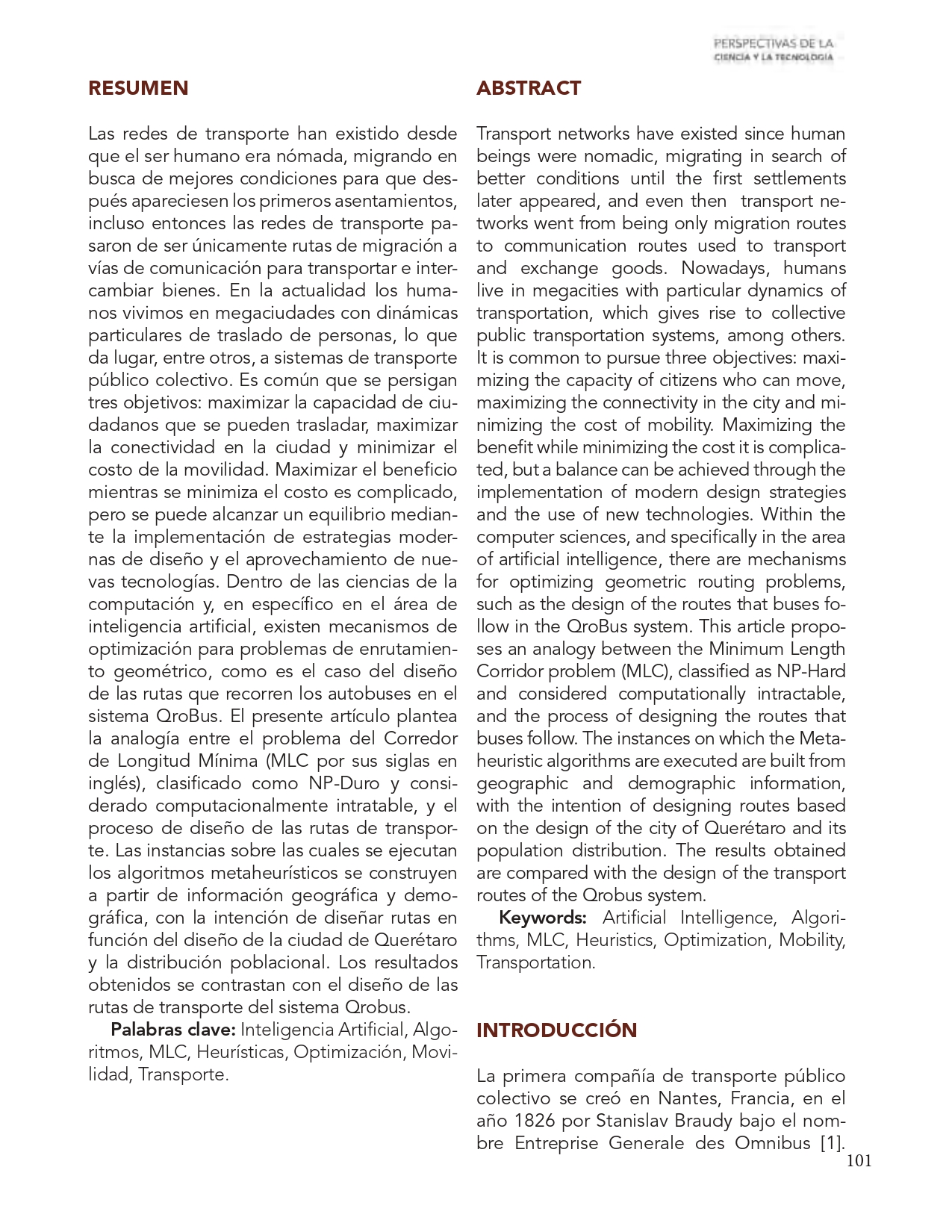Abstract
Transport networks have existed since human beings were nomadic, migrating in search of better conditions until the first settlements later appeared, and even then transport networks went from being only migration routes to communication routes used to transport and exchange goods. Nowadays, humans live in megacities with particular dynamics of transportation, which gives rise to collective public transportation systems, among others. It is common to pursue three objectives: maximizing the capacity of citizens who can move, maximizing the connectivity in the city and minimizing the cost of mobility. Maximizing the benefit while minimizing the cost it is complicated, but a balance can be achieved through the implementation of modern design strategies and the use of new technologies. Within the computer sciences, and specifically in the area of artificial intelligence, there are mechanisms for optimizing geometric routing problems, such as the design of the routes that buses follow in the QroBus system. This article proposes an analogy between the Minimum Length Corridor problem (MLC), classified as NP-Hard and considered computationally intractable, and the process of designing the routes that buses follow. The instances on which the Metaheuristic algorithms are executed are built from geographic and demographic information, with the intention of designing routes based on the design of the city of Querétaro and its population distribution. The results obtained are compared with the design of the transport routes of the Qrobus system.
This work is licensed under a Creative Commons Attribution-NonCommercial 4.0 International License.

